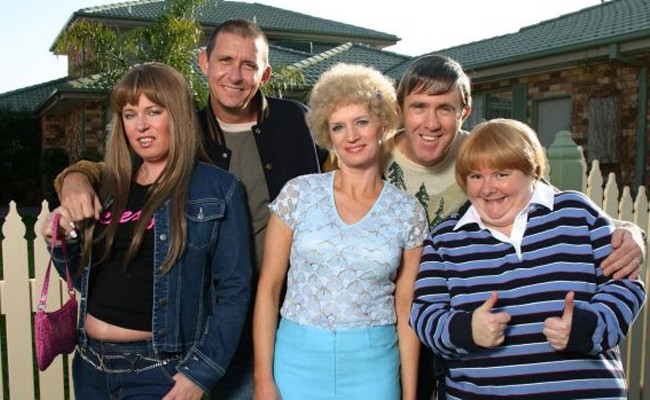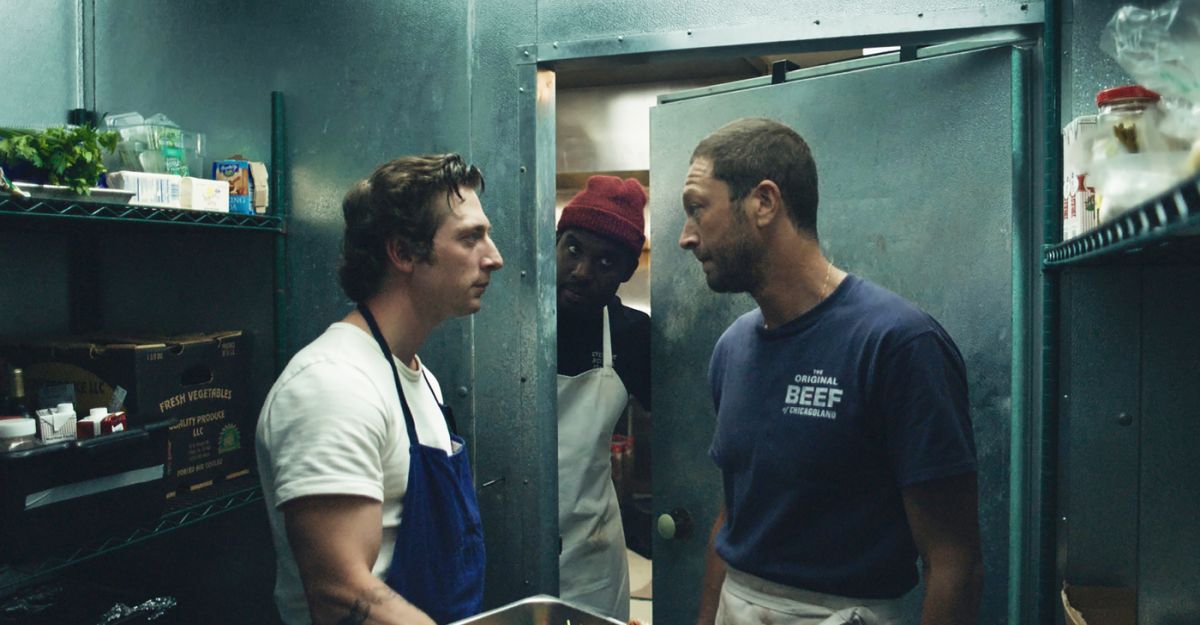In Australia, we have a limited set of character types to talk through our collective visions of suburbia. Kath & Kim and Upper Middle Bogan deliver parodies of the nouveau riche philistine, while Chris Lilley dons brownface to draw laughs from a stereotype of Polynesian identity. Over on commercial and cable, reality television shows such as the Real Housewives construct characters out of participants’ lives, fortifying a sense of ‘realism’ across our screen fictions.
Wherever we see static types appearing so consistently, it is worth interrogating what concepts of otherness are being reinforced.
Our relationship to suburbia is deeply conflicted, and these works are part of a fraught ongoing conversation about the meaning of the Australian suburbs. Filmmakers contribute to this dialogue, too. In the production notes for 2006 film Suburban Mayhem, director Paul Goldman describes his attraction to Alice Bell’s screenplay:
I loved this strong, transgressive female character who tears up the rule book, trashing the suburban streets of my childhood (our great Australian heartland), trashing all those phony, sentimental, oppressive family values everyone is trying to peddle us.
The director’s statement points to some of the consequences encountered when we start to think of suburbia as a set of values, or a symbol, rather than a real place where people live. If suburban residence in Australia is now a majority living arrangement, can we say that there are values belonging to suburbia, or are we missing a broader and more interesting narrative of cultural heterogeneity?
The thematic shorthand of a film like Suburban Mayhem is, by now, familiar: suburbia on screen is often imagined as a façade hiding darker truths, a bourgeois utopia or dystopia. It also plays on notions of misanthropic ‘transgression’, and the identity binary between the productive (male and urban) and the private (domestic woman).
Yet when we evoke such symbols, whose suburbia are we talking about?
In Australia, these narratives and images point to the influence of an American suburban imaginary when thinking through our own geographic context. Historian Mark Peel expressed his astonishment at the mismatch between impressions of suburbia inherited through media and the reality he found himself living:
We were puzzled when people talked about ‘monocultural’ outer suburbs. Most of our neighbours were migrants or the children and grandchildren of migrants. In our part of the estate, Koreans, Filipinos, Greeks, Indians, English, Dutch, Samoans and New Zealanders were mixing as neighbours, partners and friends.
This image upsets any claim of an insidious unanimity in suburbia: with all of these communities interacting, how do we come to imagine the suburbs of Australia as an ideological cul-de-sac?
More recent films from Little Fish to Down Under present a multicultural suburban Australia, yet still fixate upon its darkness and violence rather than the majority experience of conflict aversion and suburban moral minimalism.
Kath and Kim, building on tropes reaching back to Dame Edna Everage, could be thought of as epitomising the cultural cringe, drawing an ambivalent line between derision and affection for its characters. Other films, including The Castle and Muriel’s Wedding, speak to Australian suburban particularities with a mix of ironic detachment and sentimentality.
These works engage a number of key qualifiers in their positioning of character types: one is that their subjects are not-quite-us. Viewers may feel gratified by the sense of an Australia that remains heroically provincial or culturally unaware, but would never identify themselves as embodying, say, the bumbling socioeconomic ascendancy of Kath and Kim. The search for some cultural purity in provincialism is comparable to the politics of outsider art, in which disinterestedness becomes a mark of authenticity. Both also have inherent politics written into their codes of consumer and consumed, or observer and observed.
Thus we can retain a sense of superiority while any derision is also qualified, encased as it is in a sentimental sense of pride for a parochialism that is Australia’s, but not specifically our own.
Circulating so many of the Australian suburban works are tacit questions of ownership: the bush may be perceived as ‘ours’, while the urban and suburban are foreign imports, reminders of an imperial template we have inherited and echoed. In 2006, the same year as Suburban Mayhem, Ray Lawrence’s Jindabyne finally pointed to the absurd foundations of these notions of ownership – the Indigenous peoples they ignore.
Lawrence’s works (including Bliss and Lantana), along with television shows like The Slap, demonstrate how apt ensemble cast narratives are for exploring diverse human geographies. They also reveal how the terms of our cultural conversation may be contestable to begin with: there is a self-handicapping at work when we use character typification as a primary method to discuss our socio-spatial world.
Different examples turn the levels of derision and affection up and down leading to divergent results. For example, some prohibit affection by exaggerating their types to grotesque proportions, like Lilley’s arch-cynical Ja’mie, whom he calls, ‘a bitch … I have observed those kinds of girls and I find them fascinating’. His claim to realism makes suburban soaps like Neighbours seem generous by comparison.
Some have suggested that Lilley is able to get away with his cultural appropriations by a claim to satiric credibility. However, it is not necessarily true that stereotyping is an inevitable product of comedic formats either. Comedies from Malcolm to Kenny provide kinder portraits of more complex suburban figures (while films like Muriel’s Wedding afford complexity to some characters more than others), and satirists such as Max Gillies approach parody with a duty to broader political insight.
There is clearly a class politics here. Works like Suburban Mayhem and the mockumentaries of Chris Lilley present as critiques of bourgeois hypocrisies, but in themselves express a disdain for the majority by robbing them of cultural specificity.
All narratives use character types to some degree, but if those types are static, immovable, and fail to be complicated by mediating detail, we have a problem. Notions of ‘suburban values’ provide an excuse to relax into character types, encouraging us to see the other as somehow less culturally dimensional or their worlds as less complex. Even where images of suburban identity are sentimental, we can still ask whether that affection translates as sympathy for an imagined other whose life and culture are less complex than our own.
Both our so-called ‘cultural cringe’ and the influence of American media images compel film- and TV-makers to deal with suburbia as a homogenous entity. The best works, however, resist this reductive appeal to ask questions of lived domestic experience: what is happening in our daily lives, in our homes, in our quotidian routines, and how do our political circumstances affect our most intimate social selves?
As our living arrangements morph over coming decades, I remain hopeful we will see more works that probe the spaces we live in with curiosity rather than contempt.
Image: Still from Kath & Kim.






